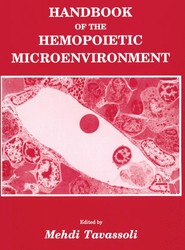(To see other currencies, click on price)
MORE ABOUT THIS BOOK
Main description:
The ability to diagnose cancer by simple measurement of a serum or tissue' 'marker" has been a goal of medical science for many years. There is ample evidence that tumor cells are different from normal cells and pro duce substances that can be detected by currently available immuno chemical or biochemical methods. These "cancer markers" may be se creted proteins, enzymes, hormones, fetal serum components, monoclonal immunoglobulins, cell surface components, or cytoplasmic constituents. The purpose of this book is to present the current status of our knowledge of such cancer markers. The first tumor marker identified by laboratory means was Bence Jones protein. In a series of lectures delivered to the Royal College of Phy sicians in London in 1846, Dr. H. Bence Jones described studies on a urine sample sent to him with the following note: "Dear Dr. Jones-The tube contains urine of very high specific gravity. When boiled it becomes slightly opaque . . . . etc. " Dr. Jones found that heating of the urine after addition of nitric acid resulted in formation of a heavy precipitate; acid ad dition may have been required to bring the urine to pH 4-6 at which Bence Jones proteins are more likely to precipitate when heated. This urinary pre cipitate was associated with a bone disease termed "mollities ossium. " [H. Bence Jones, Papers on Chemical Pathology, Lecture III. Lancet 2, 269-274 (1847)].
Contents:
1 Monoclonal Antibodies to Human Tumor Antigens.- 1. Introduction.- 2. Monoclonal Antibodies to Preselected Antigens-Technology.- 2.1. Hybridomas.- 2.2. Epstein-Barr Virus Transformation of Human Lymphocytes.- 3. Monoclonal Antibodies to Human Tumors.- 3.1. Leukemia Antigens.- 3.2. Melanoma Antigens.- 3.3. Colorectal Carcinoma Antigens.- 3.4. Alphafetoprotein.- 3.5. Neuroblastoma Antigens.- 4. Potential Diagnostic and Therapeutic Uses of Monoclonal Antibodies.- 5. Potential Problems with Monoclonal Antibody Usage.- 6. Final Comments.- References.- 2 Cell Surface Antigens on Normal and Neoplastic Human Lymphoid Cells.- 1. Three Major Classes of Immunocompetent Lymphocytes.- 1.1. Subsets of Lymphocytes Defined by Rosetting with Sheep Red Blood Cells.- 1.2. T Cell Subsets Defined by Membrane Receptors for Immunoglobulin.- 1.3. Cell Surface Markers Defined by Heteroantisera.- 2. Cell Surface Markers Defined by Monoclonal Antibodies.- 2.1. Antigens That Potentially May be Detected by Monoclonal Antibodies.- 2.2. Monoclonal Antibodies Reactive with PBL-T Cells.- 2.3. Antigens Detected on Thymocytes by Monoclonal Antibodies.- 2.4. Cell Surface Markers on B Cells and Monocytes.- 2.5. Monoclonal Antibodies Reactive with Leukemias and Lymphomas.- 2.6. Precautions in Interpreting the Reactivity of Monoclonal Antibodies.- 3. Clinical Applications.- 3.1. Lymph Node Architecture: Normal and Malignant.- 3.2. Clinical Applications of Monoclonal Antibody Technology.- 4. Summary.- References.- 3 An Immunochemical Approach to the Isolation of Human Melanoma-Associated Antigens.- 1. Introduction.- 2. Methods.- 2.1. Intrinsic Labeling.- 2.2. SDS Polyacrylamide Gel Electrophoresis (SDS-PAGE).- 2.3. Indirect Immunoprecipitation.- 3. Identification of MAA in Spent Culture Medium.- 4. Characterization of Melanoma-Associated Antigens.- 4.1. Molecular Characterization.- 4.2. Cell Surface Location.- 5. Preparation of Specific Antimelanoma Xenoantisera to 240K and 94K Antigens.- 6. Purification of 240K and 94K MAA from Spent Culture Medium.- 7. Summary.- References.- 4 Skin Tumor Markers.- 1. Introduction.- 2. Melanoma.- 2.1. Immunological Markers.- 2.2. Biochemical Markers.- 3. Basal- and Squamous-Cell Carcinoma.- 3.1. Immunological Markers.- 3.2. Biochemical Markers.- 4. Conclusion.- References.- 5 Gastrointestinal Cancer Markers.- 1. Introduction.- 2. Enzymes and Hormones in Gastrointestinal Tumor Disease.- 3. Tissue Antigens of Human Gastrointestinal Cancers Defined by Xenogeneic Antisera.- 3.1. Carcinoembryonic Antigen (CEA).- 3.2. Colon Cancer Antigens Defined by Monoclonal Antibodies.- 3.3. Other Colon-Derived Antigens.- 3.4. Gastric-Derived Antigens.- 3.5. Alphafetoprotein (AFP) in Esophageal and Gastric Cancer.- 3.6. Deleted Antigens.- 3.7. Conclusions.- 4. Tissue Antigens of Human Large Bowel Cancers Immunogenic in the Host of Origin.- 4.1. Antigens Defined by Demonstration of Cell-Mediated Reactivity in the Host of Origin.- 4.2. Antigens Defined by Humoral Antibodies in Patient Serum.- 4.3. Conclusions.- 5. Tissue Antigens of Rat Bowel Cancers.- 5.1. Antigens Defined by Xenogeneic Antisera.- 5.2. Nonhistone Nuclear Protein Antigens.- 5.3. Antigens Immunogenic in the Original Tumor Host.- 5.4. Expression of Embryonic Antigens on Rat Colon Carcinoma Cells.- 5.5. Conclusions.- References.- 6 Hepatocellular Carcinoma Markers.- 1. Introduction.- 2. Liver Function Tests.- 3. Alphafetoprotein.- 4. Enzymes and Isoenzymes.- 5. Systematic Manifestations of Hepatoma and Ectopic Hormone Production.- 6. Ferritin.- 7. Hepatoma-Associated Antigens.- 8. Hepatitis B Virus.- 9. Summary.- References.- 7 Pancreatic Tumor Markers.- 1. Introduction.- 2. Pancreatic Oncofetal Antigen.- 2.1. Tissue Localization of POA.- 2.2. Serum Levels of POA in Malignant Diseases.- 2.3. POA in Pancreatic Juice.- 2.4. Differential Diagnostic Value of POA in Obstructive Jaundice.- 2.5. The Differentiation Between Carcinoma of the Pancreas and Chronic Pancreatitis.- 2.6. Longitudinal Studies of POA.- 2.7. The Future for POA.- 3. Comparison with Carcinoembryonic Antigen.- References.- 8 Prostote Cancer Markers.- 1. Introduction.- 2. Prostatic Acid Phosphatase.- 3. Prostate Antigen.- 4. Alkaline Phosphatase.- 5. Ribonuclease.- 6. Polyamines.- 7. Conclusions.- References.- 9 Breast Cancer Markers.- 1. Introduction.- 2. Structure of the Breast.- 3. Diseases of the Breast.- 4. Oncodevelopmental Markers.- 4.1. Beta-Oncofetal Antigen (BOFA).- 4.2. Ferritin and Isoferritins.- 4.3. Carcinoembryonic Antigen (CEA).- 5. Differentiation Markers.- 5.1. Hormone Receptors.- 5.2. Casein.- 5.3. Alpha-lactalbumin.- 5.4. Mammary Gland Cyst Fluid Protein.- 5.5. Milk Fat Globule Proteins.- 6. Other Tumor-Associated Molecules.- 6.1. Thomsen-Freidenreich (T) Antigen.- 6.2. Chorionic Gonadotropin.- 6.3. Calcitonin.- 6.4. ?2-Microglobulin.- 6.5. Tissue Polypeptide Antigen.- 6.6. Urinary Polyamines.- 6.7. Assay of Multiple Tumor Markers.- 7. Candidate Tumor-Specific Markers.- 7.1. MMTV-Related Antigen.- 7.2. Mammary Tumor-Specific Glycoprotein (MTGP).- 7.3. Human Monoclonal Antibody-Defined Markers.- 8. Immune Response Markers.- 8.1. Humoral Immune Responses to MMTV.- 8.2. Cellular Immune Responses to MMTV.- 9. Genetic Markers.- 9.1. Cytogenetic Markers.- 9.2. GPT-Linked Marker.- 10. Comment.- References.- 10 Ovarian and Uterine Cancer Markers.- 1. Oncodevelopmental Antigens.- 1.1. Alphafetoprotein.- 1.2. Carcinoembryonic Antigen.- 1.3. Chorionic Gonadotropin and Subunits of Glycoprotein Hormones.- 1.4. Pregnancy-Specific Beta-1-Glycoprotein (SP1).- 1.5. Placental Protein 5 (PP5).- 2. Enzymes.- 3. Other Antigens.- 3.1. Ovarian Cancer-Associated Antigens OCAA and OCAA-1.- 3.2. Ovarian Cancer Antigens OvC-l-OvC-6.- 3.3. Miscellaneous Markers.- 4. Summary.- References.- 11 Testicular Cancer Markers.- 1. Introduction.- 2. Clinical Aspects of Testicular Cancer.- 3. Incidence and Specificity of AFP and HCG.- 4. Markers as Aids in Diagnosis and Staging.- 4.1. Diagnosis.- 4.2. Staging.- 5. Markers in Monitoring and Followup.- 6. Markers in Seminoma.- 7. Other Uses of AFP and HCG in Testicular Cancer.- 8. Other Markers for Testicular Cancer.- 9. Location of Tumors with Oncodevelopmental Markers.- 10. Tumor Markers in Pathology.- 11. The Future.- References.- 12 Placental Proteins as Tumor Markers.- 1. Introduction.- 2. Placental Alkaline Phosphatase.- 2.1. Isoenzymes and Multiple Forms of Placental Alkaline Phosphatase.- 2.2. Assays.- 2.3. Tumor-Related Alkaline Phosphatases.- 3. Histaminase (Diamine Oxidase).- 4. Human Chorionic Gonadotropin.- 4.1. Assays.- 4.2. HCG as a Tumor Marker.- 5. Pregnancy Specific Glycoprotein (SP1).- 5.1. Assays.- 5.2. Normal Tissue Origin of SP1.- 5.3. Tumors Associated with Elevated Levels of SP1.- 5.4. SP1 In Vitro.- 6. Placental Proteins (PP1).- 7. Final Remarks.- References.- 13 Bladder and Renal Tumor Markers.- 1. Introduction.- 2. Bladder Cancer.- 2.1. Morphological Markers of Bladder Carcinoma Cells.- 2.2. Potential Tumor Markers in Bladder Cancer Tissue, Urine, and Serum.- 2.3. Disease-Associated Immune Response in Bladder Cancer.- 3. Renal Cancer.- 3.1. Potential Tumor Markers in Renal Cancer.- 3.2. Immune Responses in Patients with Renal Cancer.- References.- 14 Endocrine Markers of Cancer: The Biological and Clinical Implications of Polypeptide Hormones.- Geoffrey Mendelsohn, Stephen B. Baylin.- 1. Introduction.- 2. Patterns of Inappropriate (Ectopic) Hormone Production by Tumors.- 2.1. Ectopic Small Polypeptide Hormone Production-The APUD (Amine Precurser Uptake and Decarboxylation-Neural Crest Theory).- 2.2. Ectopic "Oncoplacental" Hormone Production.- 3. Proposed Mechanisms of Inappropriate Hormone Production by Non-Endocrine Tumors.- 3.1. "Sponge" Theory.- 3.2. Genetic Mechanisms.- 4. Markers in Endocrine Tumors.- 4.1. Calcitonin in Medullary Thyroid Carcinoma and Other Human Cancer Markers.- 4.2. Islet Cell Tumors of the Pancreas.- 4.3. Carcinoid Tumors.- 5. Markers in Non-Endocrine Tumors.- 5.1. Carcinoma of the Lung.- 5.2. Neural Tumors.- 5.3. Prostatic Carcinoma.- 6. Summary.- References.- 15 Lung Cancer Markers.- 1. Introduction.- 2. Oncofetal Proteins.- 2.1. Carcinoembryonic Antigen (CEA).- 2.2. Alphafetoprotein (AFP).- 2.3. Pancreatic Oncofetal Antigen (POA).- 3. Hormones.- 3.1. Adrenocorticotropic Hormone (ACTH).- 3.2. Lipotropin (LPH).- 3.3. Calcitonin (CT).- 3.4. Human Chorionic Gonadotropin (HCG).- 3.5. Parathyroid Hormone (PTH).- 3.6. Arginine Vasopressin (AVP).- 3.7. Prolactin.- 3.8. Placental Lactogen (PL).- 3.9. Growth Hormone (GH).- 4. Serum Proteins.- 4.1. Immunoglobulins (Ig).- 4.2. Ferritin.- 4.3. Ceruloplasmin.- 4.4. AlpharAntitrypsin (ct,-AT).- 4.5. ?2-Microglobulin.- 4.6. Tissue Polypeptide Antigen (TPA).- 4.7. Circulating Immune Complexes (CIC).- 4.8. Other Serum Proteins.- 5. Enzymes.- 5.1. Placental Alkaline Phosphatase.- 5.2. 5'-Nucleotide Phosphodiesterase Isozyme-V (5'-NPD-V).- 5.3. Amylase.- 5.4. Creatine Kinase BB.- 6. Other Substances.- Tennessee Antigen (TA).- References.- 16 Central Nervous System Tumor Markers.- 1. Introduction.- 2. Markers of Primary Intracranial Tumors.- 2.1. Markers Detected by Immunochemical Methods.- 2.2. Enzymatic Markers.- 2.3. Other Markers.- 2.4. Hormonal Markers.- 3. Markers of Metastatic Intracranial Tumors.- 3.1. Human Chorionic Gonadotropin.- 3.2. Carcinoembryonic Antigen.- 4. Conclusion.- 5. Future Prospects.- References.
PRODUCT DETAILS
Publisher: Springer (Humana Press Inc.)
Publication date: October, 2011
Pages: 428
Weight: 688g
Availability: Available
Subcategories: Pathology
From the same series















